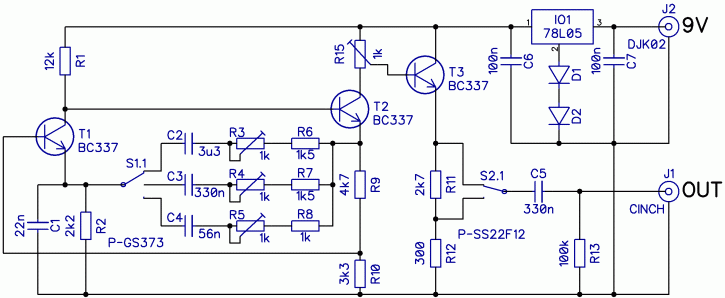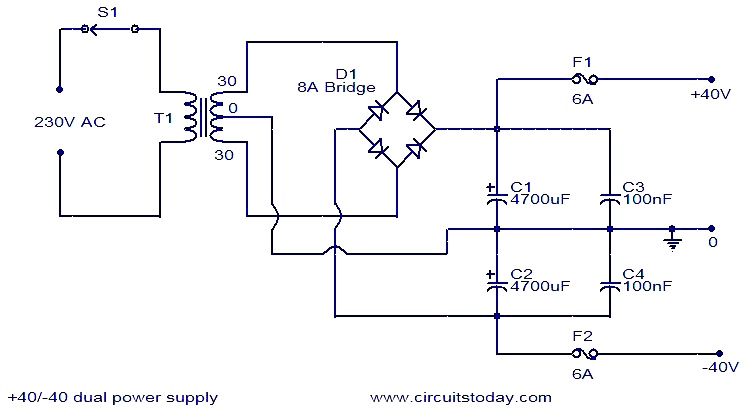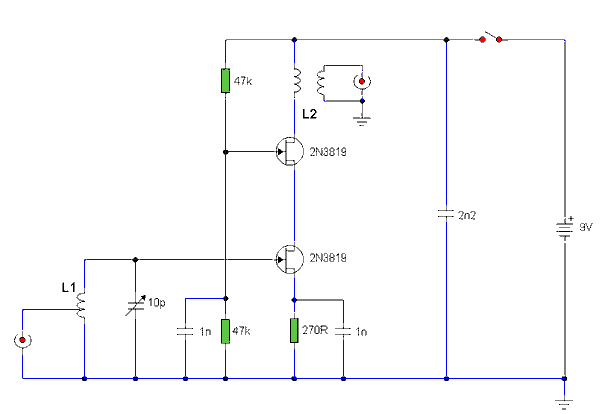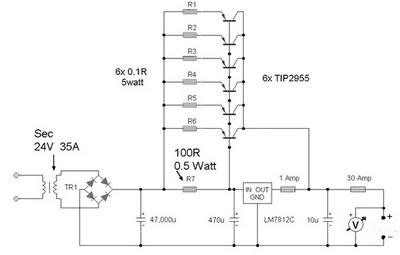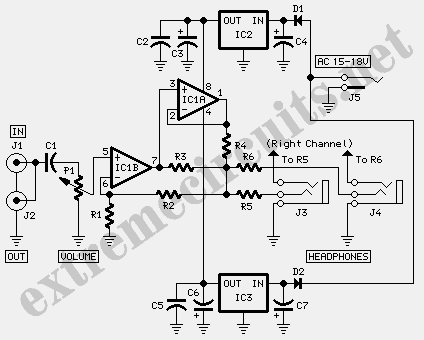
NJM2274AR LOW POWER VIDEO AMPLIFIER WITH Y-C MIXER
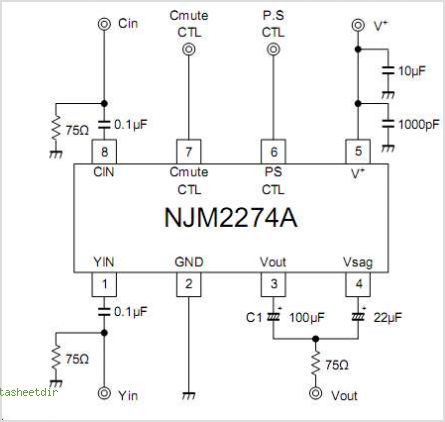
The NJM2574 is a low voltage video amplifier that includes a low-pass filter (LPF) circuit, a driver, and an internal clamp/bias function. It is designed to connect directly to a TV monitor using a composite input signal of 0.5V peak-to-peak. The amplifier features a mute circuit with a power-saving function, making it ideal for low-power applications. The NJM2574 is particularly suitable for downsizing digital still cameras and digital video cameras due to its compact package.
The NJM2574 integrates several critical functions that enhance its utility in low-voltage video applications. The internal low-pass filter effectively reduces high-frequency noise, ensuring that the output signal maintains clarity and fidelity, which is essential for high-quality video playback. The integrated driver is capable of delivering sufficient current to drive the connected load, such as a television or monitor, without the need for additional external components.
The clamp/bias circuit within the NJM2574 plays a vital role in stabilizing the output signal by setting the DC level of the video signal, thereby preventing distortion during transmission. This feature is particularly important in applications where signal integrity is paramount, such as in professional video equipment.
The mute circuit with a power-saving function allows the NJM2574 to conserve energy when not in use, making it an excellent choice for battery-operated devices. This is particularly beneficial in portable digital cameras and camcorders, where battery life is a critical consideration.
The NJM2574’s ability to handle a composite input signal of 0.5V peak-to-peak ensures compatibility with a wide range of video sources, including standard cameras and video players. Its compact design facilitates integration into space-constrained environments, such as handheld devices, where size and weight are significant factors.
Overall, the NJM2574 is an advanced solution for low voltage video amplification, providing essential features that cater to the needs of modern digital imaging devices while ensuring efficient power management and high-quality signal processing.The NJM2574 is a Low Voltage Video Amplifier contained LPF circuit75 driver and internal CLAMP/BIAS SWLPF/through SW to connect TV monitor directly. The input composite signal. (0. 5Vpp) The mute circuit with power save function is suitable for low power design. The NJM2574 is suitable for down sizing of Digital Steel Cameraand DVC for small package . 🔗 External reference
The NJM2574 integrates several critical functions that enhance its utility in low-voltage video applications. The internal low-pass filter effectively reduces high-frequency noise, ensuring that the output signal maintains clarity and fidelity, which is essential for high-quality video playback. The integrated driver is capable of delivering sufficient current to drive the connected load, such as a television or monitor, without the need for additional external components.
The clamp/bias circuit within the NJM2574 plays a vital role in stabilizing the output signal by setting the DC level of the video signal, thereby preventing distortion during transmission. This feature is particularly important in applications where signal integrity is paramount, such as in professional video equipment.
The mute circuit with a power-saving function allows the NJM2574 to conserve energy when not in use, making it an excellent choice for battery-operated devices. This is particularly beneficial in portable digital cameras and camcorders, where battery life is a critical consideration.
The NJM2574’s ability to handle a composite input signal of 0.5V peak-to-peak ensures compatibility with a wide range of video sources, including standard cameras and video players. Its compact design facilitates integration into space-constrained environments, such as handheld devices, where size and weight are significant factors.
Overall, the NJM2574 is an advanced solution for low voltage video amplification, providing essential features that cater to the needs of modern digital imaging devices while ensuring efficient power management and high-quality signal processing.The NJM2574 is a Low Voltage Video Amplifier contained LPF circuit75 driver and internal CLAMP/BIAS SWLPF/through SW to connect TV monitor directly. The input composite signal. (0. 5Vpp) The mute circuit with power save function is suitable for low power design. The NJM2574 is suitable for down sizing of Digital Steel Cameraand DVC for small package . 🔗 External reference
